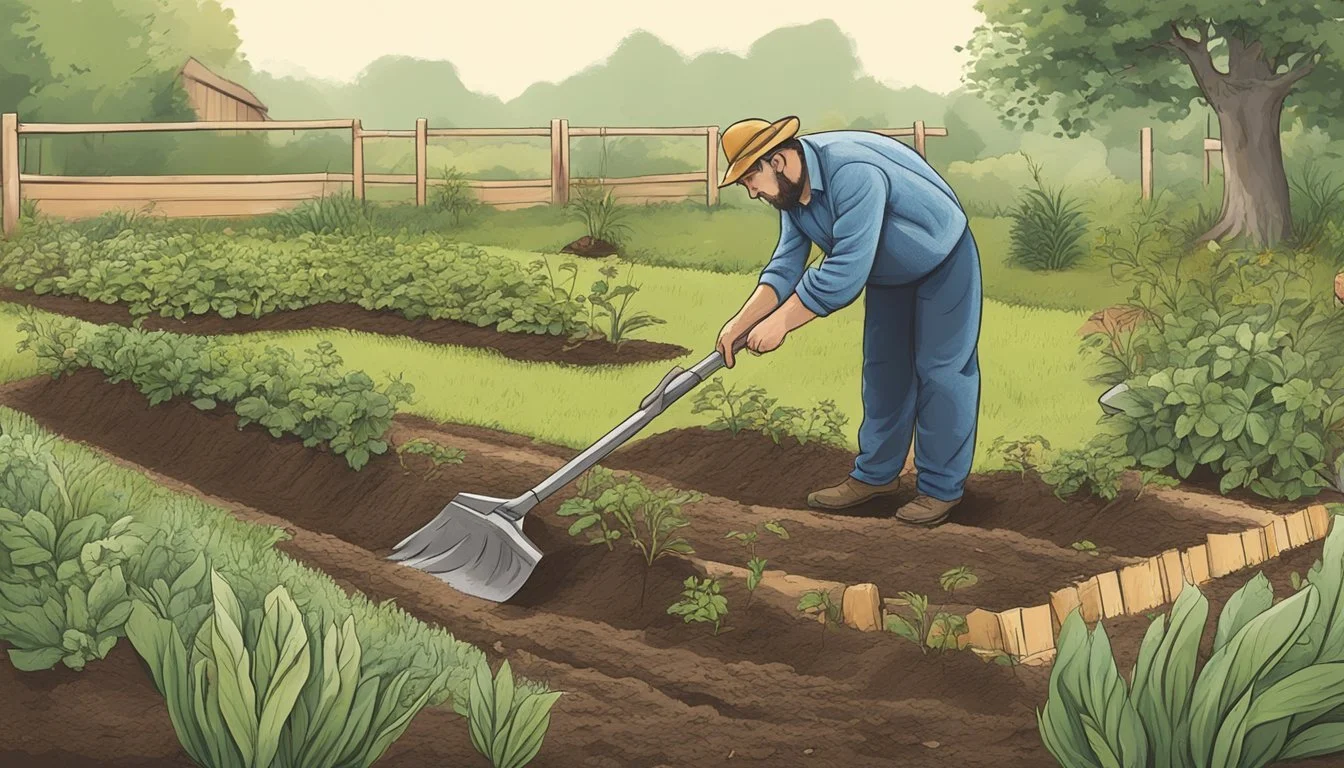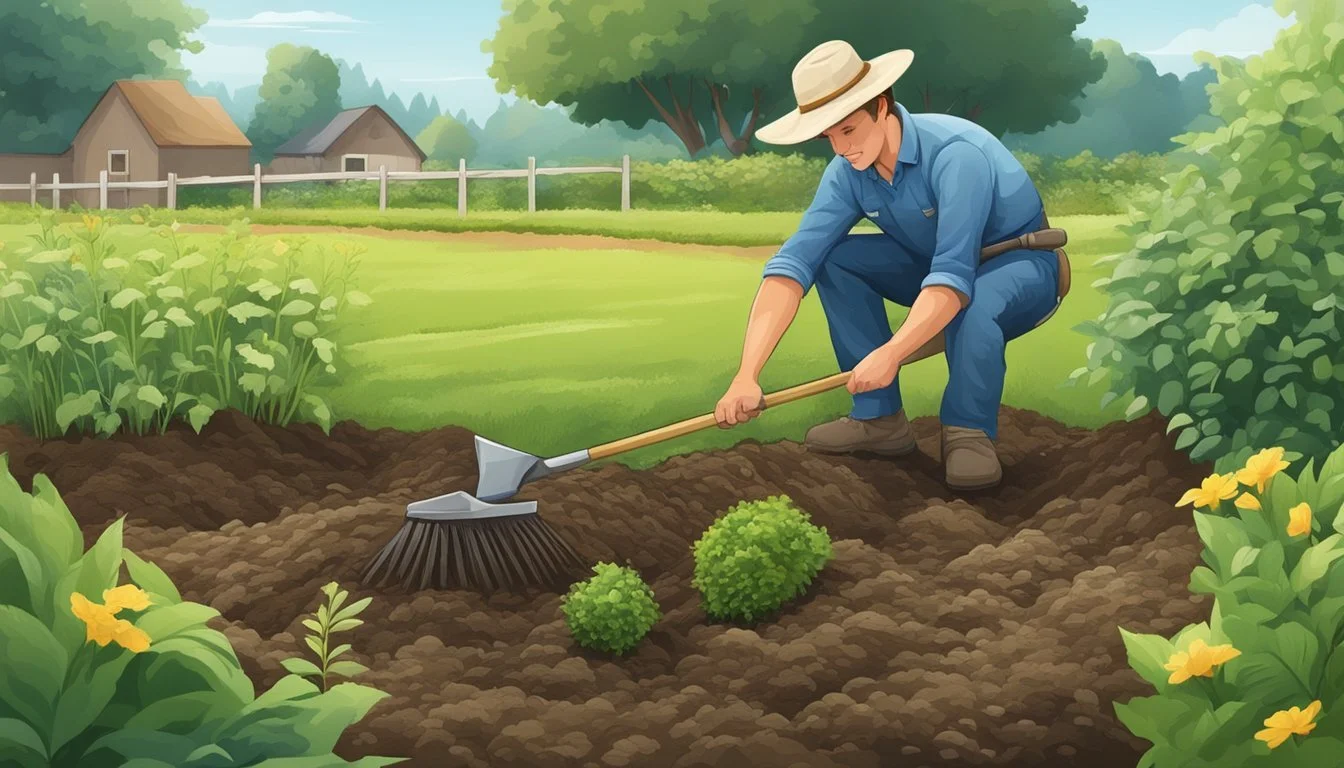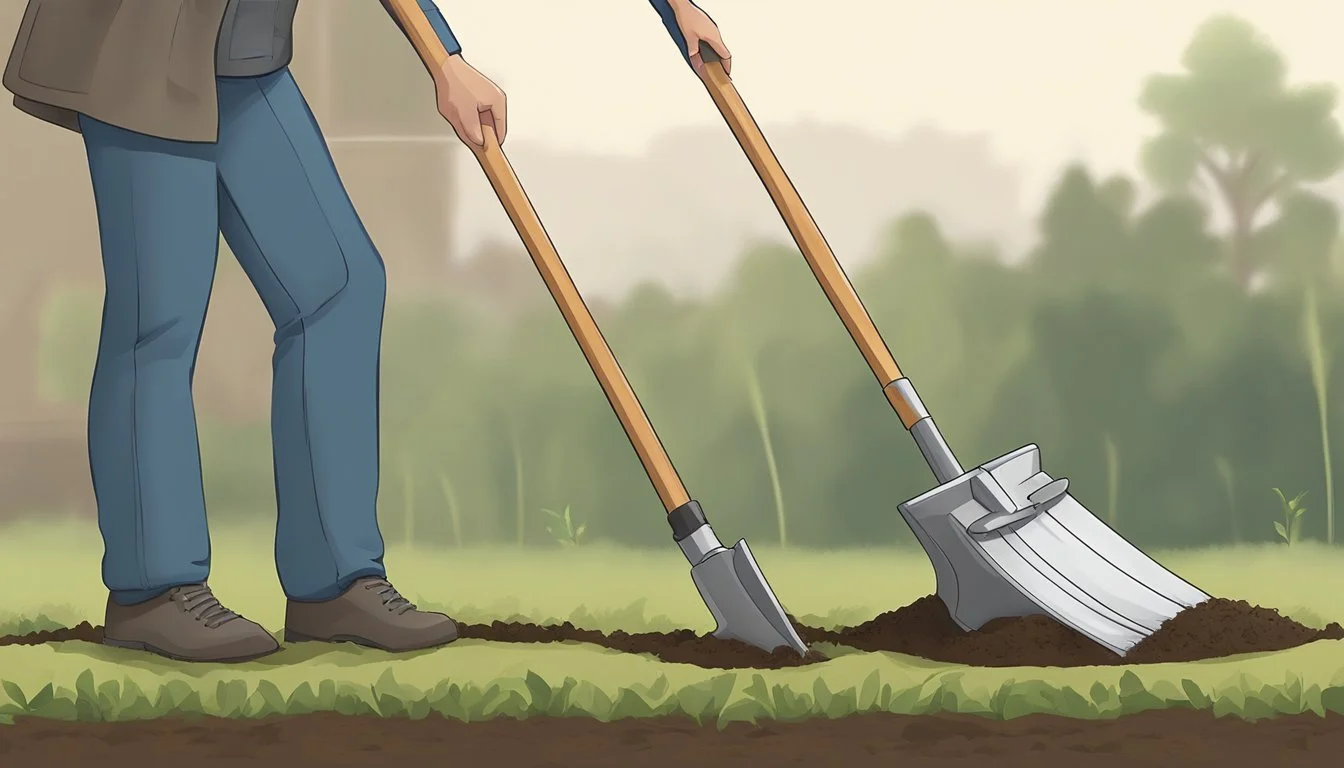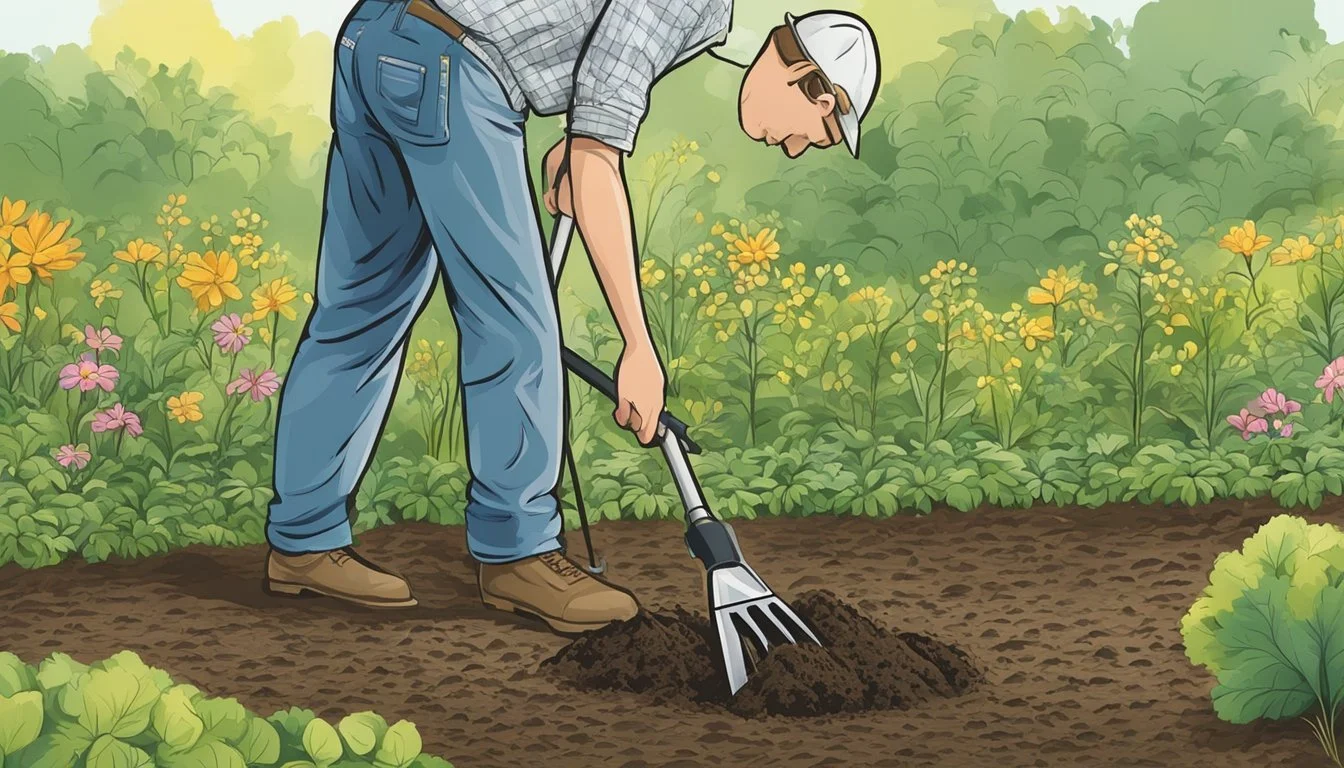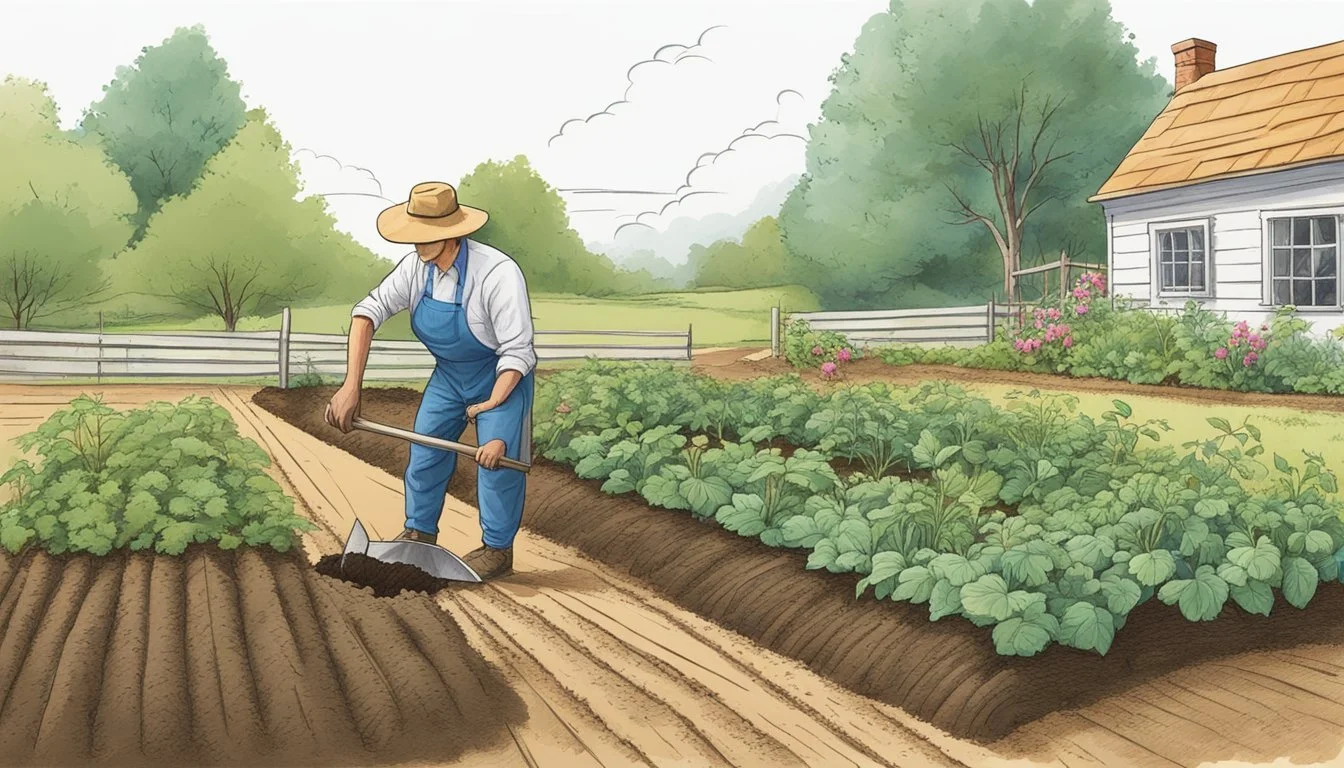The Ultimate Guide to Using a Hoe
Mastering Soil Cultivation and Weeding for Homesteaders
In the world of homesteading, a garden hoe stands as an essential tool for soil cultivation and weed management. Its simple design belies its versatility and effectiveness in preparing the earth for planting, controlling weeds, and maintaining healthy soil. By expertly wielding a hoe, homesteaders can create an ideal environment for their crops to flourish. Proper use of this traditional implement allows for the efficient breaking up of soil, incorporation of organic matter, and careful removal of unwanted vegetation without the use of chemicals.
Using a garden hoe requires technique and understanding. A good stance is crucial, with one hand gripping the top of the hoe handle and the other near the blade to provide control and leverage. A slicing motion, rather than chopping, is recommended when cutting through weeds to minimize soil disturbance and reduce the risk of injury. Sharpness of the blade is equally important as it facilitates clean cuts and reduces physical effort. With these methods, the tool becomes an extension of the homesteader's hands, capable of promoting soil aeration and combating invasive weeds with precision and ease.
Understanding the Basics of Hoe Types
In homesteading, the right choice of hoe is instrumental for effective soil cultivation and weeding. This section will explore the variety of hoes available, how to select one, and the importance of material composition.
Differentiating Garden Hoes
Garden hoes come in various shapes and designs, each serving specific purposes:
Draw Hoe: Ideal for preparing soil and digging furrows, it features a square blade set at a right angle to the handle.
Dutch Hoe: Its sharp, flat blade is perfect for cutting weeds below the soil surface while pushing or pulling.
Scuffle Hoe (Stirrup or Hula Hoe): This hoe has a double-edged oscillating blade that skims the soil surface to slice weed roots with a back-and-forth motion.
Collinear Hoe (Onion Hoe): Features a long, thin blade for weeding in tight spaces without bending over, aligning with the soil surface.
Paddle Hoe: A versatile tool with a broader blade used for moving and shaping soil.
Loop Hoe (Action Hoe): With a looped steel blade, it effectively cuts weeds with a push-pull action.
Warren Hoe (Pointed Hoe): Triangular in shape, it is used for making furrows and weeding in difficult areas.
Grub Hoe (Heavy-duty Hoe): A strong hoe appropriate for breaking tough ground and digging.
Push Hoe: Designed to be pushed under the soil surface to slice through weed roots.
Selecting the Right Hoe
To select the right hoe, consider the specific task:
Weeding: Choose a scuffle hoe, Dutch hoe, or collinear hoe for surface weeds.
Soil Breaking: A grub hoe or draw hoe is more suitable for heavy-duty tasks.
Furrowing or Detailed Weeding: Opt for a Warren hoe or paddle hoe.
Material Considerations: Steel vs Aluminum vs Carbon
The durability and effectiveness of a hoe are heavily influenced by its material:
Steel: Known for robustness, it withstands heavy use but can be heavier to handle.
Aluminum: Lightweight, which makes it easier to work with, but it may not endure heavy-duty tasks.
Carbon Steel: Offers a good balance between strength and weight and often comes with rust resistance for longevity.
Essential Hoe Usage Techniques
In homesteading, understanding how to expertly use a garden hoe is essential for soil cultivation and weed control. The technique involves a combination of the right tool, movement, and body position to achieve efficient results.
How to Use a Garden Hoe
To engage the hoe correctly, one must ensure the blade is sharp for precise cutting through soil and roots. A gardener should angle the hoe slightly to slice just below the surface, targeting the weed's roots without deeply disturbing the soil. The action used may either be a push or pull, depending on the hoe type and the gardener's preference.
Push Technique: For hoe designs such as the scuffle or stirrup hoe, a back and forth push-pull motion, similar to a sweeping action, effectively cuts and uproots weeds.
Pull Technique: Traditional hoes work well with a chopping pull stroke, where the gardener slices into the soil and drags the hoe towards themselves to uproot weeds.
Mastering the Swing
Efficient weed control with a hoe is achieved with more than just arm strength; it requires mastering the swing. Achieving a controlled and consistent swing prevents unnecessary strain and increases the effectiveness of each movement.
Momentum: Use the hoe's weight to build momentum, ensuring a forceful enough impact to cut weeds without expending excess energy.
Control: Short, measured swings are more precise and are recommended when weeding around delicate plants to avoid damaging them.
Posture and Form for Effective Hoeing
Posture and form are crucial for effective hoeing and to prevent strain on the gardener's body. One must maintain an upright stance and use their body weight to lead the hoe's movement.
Hand Placement: Place one hand at the top of the handle and the other closer to the blade to maintain control over the hoe.
Body Alignment: Ensure that shoulders are aligned with the hips while slightly bending the knees to engage core muscles, allowing the body to guide the hoe with minimal arm fatigue.
Movement: The motion should originate from the shoulders and torso, not just the arms, to drive the power of the swing and support long hoeing sessions.
Cultivating Soil with Hoes
Cultivating soil with a hoe is a fundamental aspect of homesteading that involves using this versatile tool for various tasks such as tilling the soil, creating furrows, and managing soil health. It combines soil aeration with weed control to promote fertile ground for increased crop yield.
Creating Furrows and Shallow Trenches
Furrowing involves using the hoe to create long, shallow trenches in the soil, typically for the planting of seeds or bulbs. The process for creating furrows is as follows:
Select the appropriate hoe: A traditional hoe with a wide blade is suitable.
Mark out the area: Decide on the alignment of the furrows.
Angled approach: Hold the hoe at an angle and drag it along the desired line.
Depth: Ensure the furrows are consistent in depth, ideally 2-3 inches.
Creating these trenches is essential for irrigation and drainage, which directly affects soil aeration, thereby establishing an optimal growing environment.
Tilling Soil and Improving Aeration
Tilling the soil with a hoe involves turning it over and loosening it up to improve aeration and reduce soil compaction. This promotes root growth and nutrient uptake. Here are the steps and benefits of soil aeration by tilling:
Ergonomic posture: Maintain upright posture using a long-handled hoe.
Depth of tilling: Aim for a depth of 5-6 inches to adequately cultivate the soil.
Period: Till the soil when it is moist but not wet, to avoid damaging soil structure.
Regular tilling introduces air into the soil, crucial for microorganism activity that, in turn, enhances soil fertility and structure.
Soil Fertility and Weed Control
Maintaining soil fertility is a critical component of hoe gardening, with the hoe serving a dual purpose—incorporating organic matter into the soil and controlling weeds. These practices directly influence soil health and crop productivity.
Incorporation of amendments: Evenly mix organic material into the soil with sweeping hoe motions.
Effective weed control: Use the sharp edge of the hoe to cut weeds at the root level.
Weed control not only prevents unwanted plants from competing with crops for nutrients but also contributes to the overall management of soil fertility. By consistently using a hoe to remove weeds and turn in compost or fertilizers, gardeners can maintain a balance that supports robust plant growth.
Comprehensive Weeding Strategies
In homesteading, effective weeding involves a two-fold approach: targeted weed removal and ongoing maintenance for a garden free from pesky weeds. Using the hoe—and equipping oneself with the right techniques—can yield significant results in both fronts.
Targeting Pesky Weeds
When they're dealing with pesky weeds, homesteaders should choose a sharp hoe blade carefully, as this is instrumental in effacing unwanted plants. For efficient weed control:
Straight-edge Hoes: Ideal for slicing through the soil and cutting weeds at the surface.
Pointed Hoes: Better for precision work around delicate plants.
Stirrup or Loop Hoes: Effective in getting under the weed roots and severing them with a push-pull action.
One must employ a systematic approach to remove weeds:
Identify the weeds that are most problematic.
Use a sharp hoe blade to cut just below the soil surface.
Slice the weeds rather than pulling them, which can disturb the surrounding plant roots.
Maintaining a Weed-Free Garden
For maintenance and efficient weed control, the hoe can be utilized to keep the soil loose, thereby preventing weed seedlings from taking root. Gardeners should:
Inspect the garden regularly for new weed growth.
Use the hoe to disrupt the soil weekly, making it inhospitable for weed seed germination.
To maintain a weed-free garden:
Mulch: Apply a thick layer to suppress weed growth.
Cultivation: Regularly hoe between rows and around plants to keep the soil aerated and weed-free.
Time: Weed early in the season before weeds can establish.
With these strategies, one can maintain a cultivated area with minimal weed interference, ensuring their garden remains healthy and productive.
Maintaining Your Hoe
Regular maintenance of a garden hoe ensures its effectiveness in cultivating soil and weeding. A well-maintained hoe can last for years, providing a sharp edge for cutting, resistance to rust, and a sturdy handle for efficient use.
Sharpening the Hoe Blade
A sharp hoe blade is crucial for efficient weeding and soil cultivation. Users should inspect the blade regularly for dullness and sharpen it using a sharpening stone or file as needed. The blade should be secured in a vise or by another stable means while sharpening to maintain a consistent angle. It is essential to sharpen the blade in one direction, moving towards the edge, to achieve a keen, sharp finish.
Preventing Rust and Wear
To prevent rust and wear which can shorten the tool's lifespan, the hoe should be stored in a dry place and cleaned of soil and debris after each use. Applying a light coat of oil on the metal parts can protect against moisture and rust. Gardeners should select hoes made from durable materials known for their longevity and resistance to the elements.
Handle Care and Replacement
The handle's condition is integral for the hoe's function and the user's comfort. A good grip and handle length are important for control and reducing strain. The handle should be checked periodically for splinters, cracks, or looseness. If damage is found, the handle may need to be sanded smooth for a comfortable grip or replaced entirely. When replacing, choosing a handle made of resilient hardwood or modern composite materials can improve the tool's ergonomic qualities and durability.
Safety and Ergonomics in Hoe Gardening
In the process of cultivating soil and weeding, it's essential to prioritize safety and ergonomics to prevent injury and increase efficiency. A gardener should take sensible steps to protect their body by using appropriate gear and tools.
Choosing the Right Gardening Gloves
Gardening gloves are a first line of defense, safeguarding hands from blisters and cuts. Choosing well-fitted gloves made from durable material not only prevents injury but also enhances grip. It’s crucial to select gloves that are:
Breathable: To keep hands comfortable over long periods.
Dexterous: To maintain control and precision with the hoe.
Protecting Your Back and Joints
Long hours of gardening can strain one's back and joints, making the appropriate use of a long handle hoe pivotal. Gardening with a hoe should adhere to these ergonomic practices:
Straight Back: Maintain a straight posture to distribute the workload evenly.
Knees Bent: Bend from the knees rather than the waist when reaching the ground.
Alternate Hands: Switch hand and leg positions frequently to balance muscle use.
Gardeners should also:
Wear closed-toe shoes for a stable posture.
Take regular breaks to prevent overexertion.
Implementing Safe Tool Practices
To ensure long-lasting and safe use of a hoe, gardeners should:
Regularly inspect the hoe for wear and repair any damage.
Clean the tool after use to prevent rust and degradation.
Store the hoe properly, hanging it off the ground to maintain its shape and edge.
Using a long-handled hoe correctly not only maximizes leverage but also reduces strain on the body. Proper maintenance and use of the tool are key to safe gardening practices.
Advanced Hoeing Techniques
In cultivating soil and weed management, advanced hoeing techniques such as hilling and leveling, as well as switching hands, can significantly enhance a gardener's efficiency and plant health.
Hilling and Leveling Soil
Hilling is the process of using a hoe to pile soil around the base of a plant. This technique provides multiple benefits: it supports the plant's stem, encourages deeper root growth, and can help with water drainage. Gardeners will typically use a sharp, flat hoe to achieve a clean hill without damaging plant roots.
Steps to Hill Plants Properly:
Position the hoe at a 45-degree angle to the soil surface.
Gently pull soil toward the base of the plant, forming a mound.
Ensure the mound's height is proportionate to the plant size; typically, 2-4 inches suffices.
For leveling soil, the flat side of the hoe is ideally suited. Leveling creates a smooth surface which is perfect for planting or creating a uniform appearance in the garden beds.
How to Level Soil Effectively:
Push the hoe forward across the surface to knock down high spots.
Pull back to fill in any depressions, creating a flat surface.
Switching Hands for Balanced Work
During extended periods of hoeing, gardeners are advised to switch hands to balance the workload on their body. This not only prevents muscle fatigue and strain but can also improve dexterity and control in both hands.
Tips for Switching Hands:
Start with the dominant hand handling the main workload.
Every 10-15 minutes or after completing a garden bed, switch the hoe to the other hand.
Practicing this switching technique ensures an even development of skill and muscle on both sides of the body.
Enhancing Your Gardening Experience
Masterfully integrating a hoe into routine gardening tasks can elevate the productivity and ease of maintaining an outdoor space. Learn to leverage this versatile gardening tool effectively for soil cultivation and weed control.
Integrating Hoes into Your Gardening Routine
When they bring a garden hoe into their regular gardening repertoire, gardeners find a marked improvement in their gardening experience. Selecting the right hoe for your task is crucial. For instance, a Dutch hoe is ideal for slicing weeds just below the soil surface on a push-pull motion, while a draw hoe is more suited for soil cultivation. One's body posture is also integral; gardeners should keep their back straight and use their legs to propel the hoe, reducing strain.
Utility and Benefits of Versatile Hoes
The broad utility of garden hoes goes beyond simple weed removal. With various designs, hoes can:
Aerate soil: creating channels for water and nutrients
Shape beds: consolidating soil for raised bed gardening
Mix amendments: ensuring fertilizers are evenly distributed
Draw Hoe: Breaking up soil, forming furrows - Eases soil preparation for planting
Stirrup Hoe: Cutting weeds with minimal soil disturbance - Reduces weed growth without harming crops
Collinear Hoe: Precise weeding near plant stems - Minimizes damage to plant roots
Using a gardening hoe can significantly enhance efficiency, helping you maintain a neat, orderly garden with reduced effort and time.

